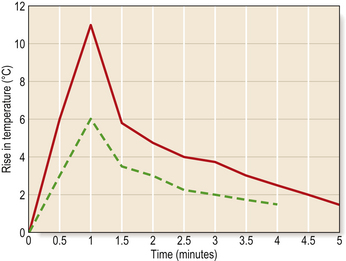Chapter 3 Biological effects and safety aspects of dental materials
Learning Objectives
From this chapter, the reader will:
• Appreciate the interrelation between dental materials and the tissues and environment of the oral cavity
• Appreciate the significance of thermal change during the setting of a material within the mouth and the potential hazards associated with this
• Understand the risks to the dental team as a result of hypersensitivity reactions associated with the materials
• Appreciate the legislation which governs the safe use of materials
• Be aware of the monitoring and reporting systems which are in place and know what to do if a reaction occurs in a patient.
Introduction
Many long-term biological effects can come to light in the fullness of time. These have significant effects for the patient and the dental team. It is important that the implications of these long-term effects are understood and also notified to the appropriate authorities to ensure that any untoward effect can be investigation for the health and safety of the population.
Thermal Changes During Setting
All materials will undergo an exothermic reaction during setting. In many cases this temperature rise is small and will have no clinical impact. However, there are a number of materials where the temperature rise during the setting reaction is marked. This is particularly the case with any resin systems. Additionally it must not be forgotten that light-curing units including LEDs radiate significant heat, which may be transmitted to the tooth causing thermal trauma to the pulp. Generally speaking, the higher the intensity, the more energy is released as heat. This is illustrated in Figure 3.1. It has been reported that the temperature of the pulp should not be raised by more than 3°C for longer than 1 minute to prevent irreversible pulpal damage occurring.
Stay updated, free dental videos. Join our Telegram channel

VIDEdental - Online dental courses



